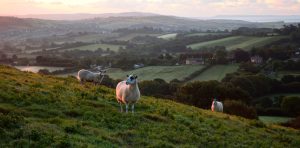As the icy fingers of winter recede and the land awakens from its frost-bound slumber, an enchanting spectacle unfurls across the undulating landscapes of Kent. The county bursts into a magical display of azure from the deep woods to the verdant meadows, from ancient hedgerows to secluded glens. This fascinating phenomenon is none other than the annual blooming of the bluebells. This botanical ballet heralds the arrival of spring and marks the transition from the sombre hues of winter to the vibrant palette of the warmer seasons.
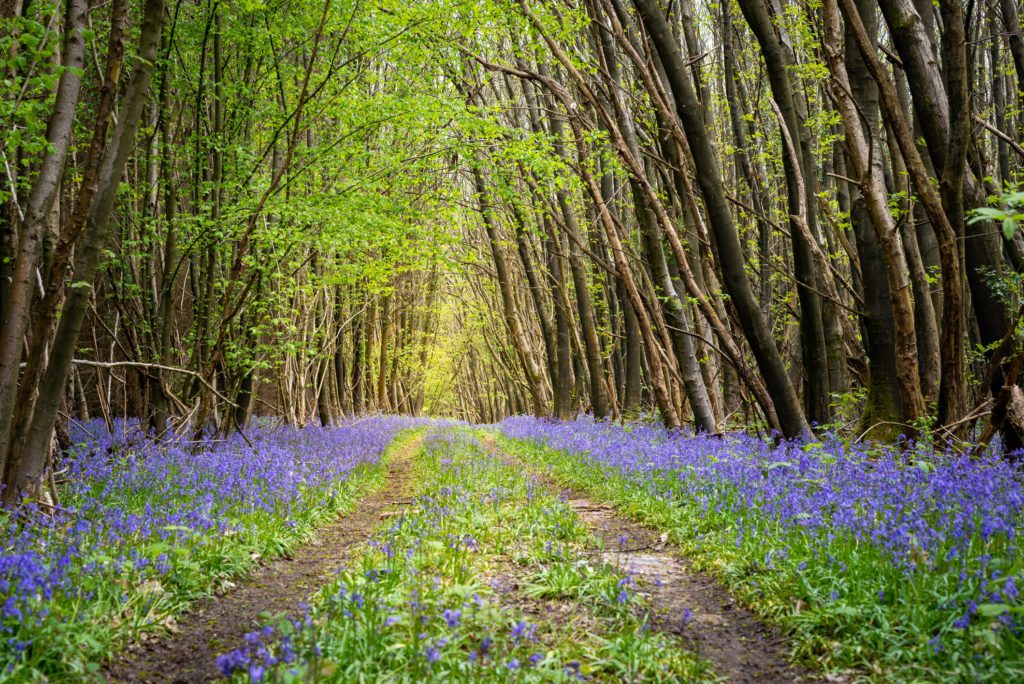
Bluebells, or Hyacinthoides non-scripta as known to botanists, are not unique to Kent. They flourish in numerous parts of Britain. However, the abundance and density of these enchanting flowers in Kent are truly unrivalled. In fact, the county is often affectionately referred to as the ‘Bluebell Capital’ of England. This title evokes images of endless seas of blue flowers undulating in the cool spring breeze.
The spectacle begins subtly, almost unnoticeably, in the early days of spring. A solitary bluebell here, a small cluster there, peeking through the moist earth and fallen leaves. This deceptive modesty, however, soon gives way to an explosion of colour. As April edges into May, the forests of Kent are transformed into an otherworldly realm, where the ground seems to vanish beneath a carpet of celestial blue.
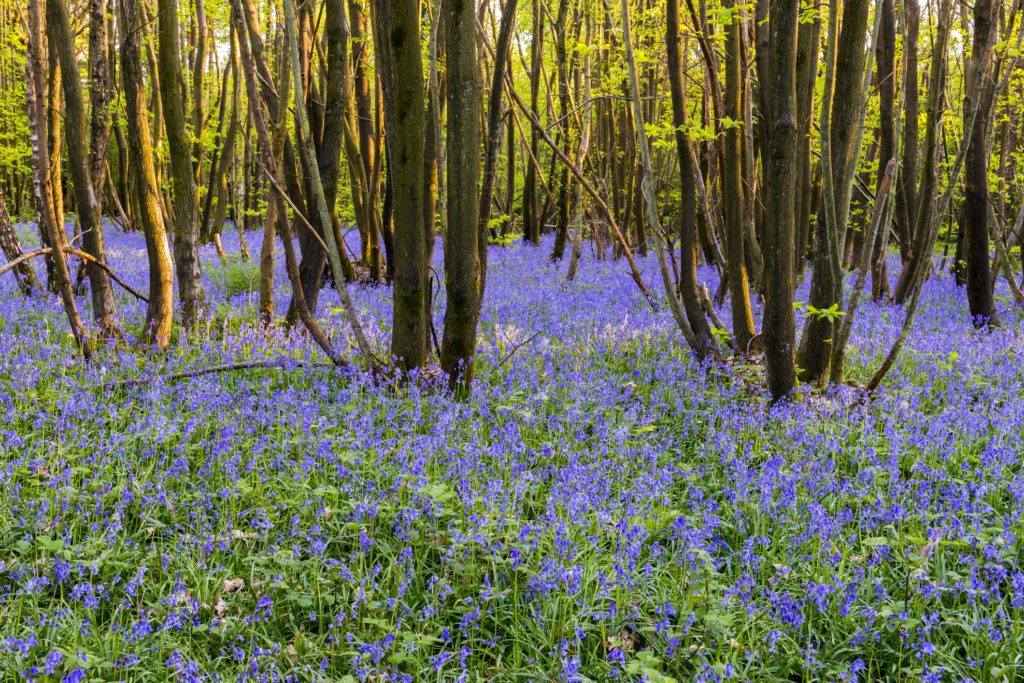
During this period, places such as the ancient woods around Ashford and Canterbury, the Blean Woods National Nature Reserve, and the chalk downs around Dover are enveloped in a sea of blue. The experience of walking through these bluebell-laden woods is akin to navigating through a dream, the air rich with the sweet, heady scent of the flowers, punctuated by the gentle hum of bees busily harvesting the rich nectar.
The bluebell is more than just a harbinger of spring or a feast for the senses. It is deeply woven into the cultural and ecological fabric of Kent. The flora finds mention in numerous folktales and poems, signifying variously the ephemeral nature of beauty, the joyous rebirth of spring, and the cyclical rhythm of nature. The annual Bluebell Festival in Farningham, where locals and tourists gather to celebrate and appreciate the flowering spectacle, further cements its cultural significance.
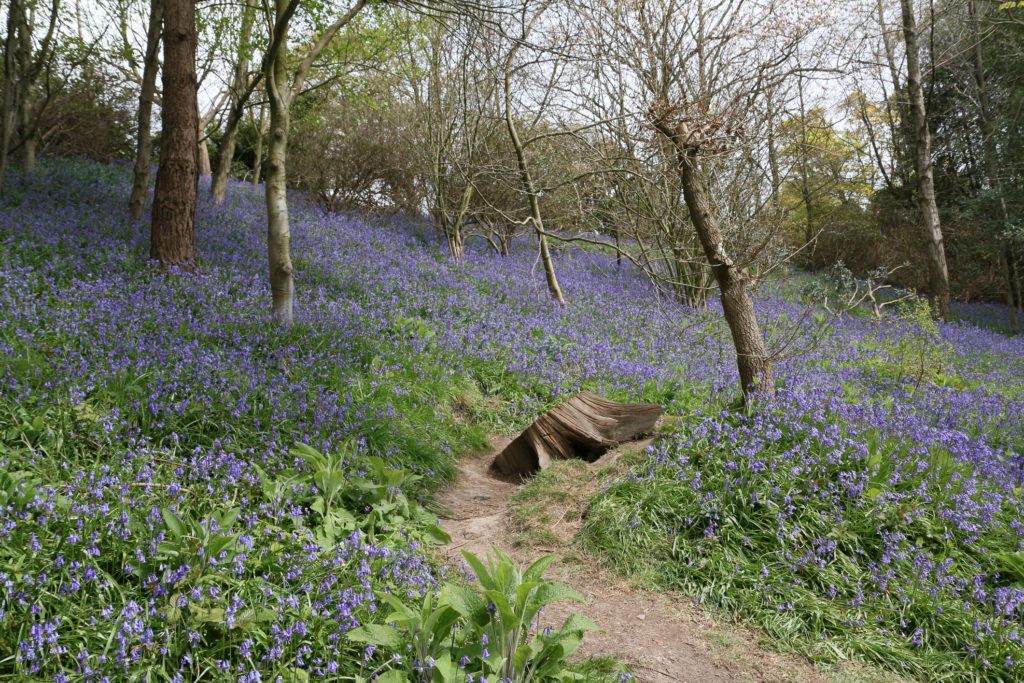
Ecologically, the bluebell is crucial in supporting the county’s biodiversity. The flowers are a vital nectar source for many insects, including bees, butterflies, and hoverflies, serving as a food source for birds and other creatures. This domino effect illustrates how the arrival of the bluebells sets the ecological wheel in motion.
In the face of climate change and habitat destruction, the bluebells of Kent are more than just a stunning natural spectacle. They symbolise resilience, a reminder of nature’s beauty, and a testament to the delicate balance within our environment. The sight of the bluebells returning, year after year, is a beacon of hope, a promise of renewal, and a tribute to the enduring allure of the natural world.
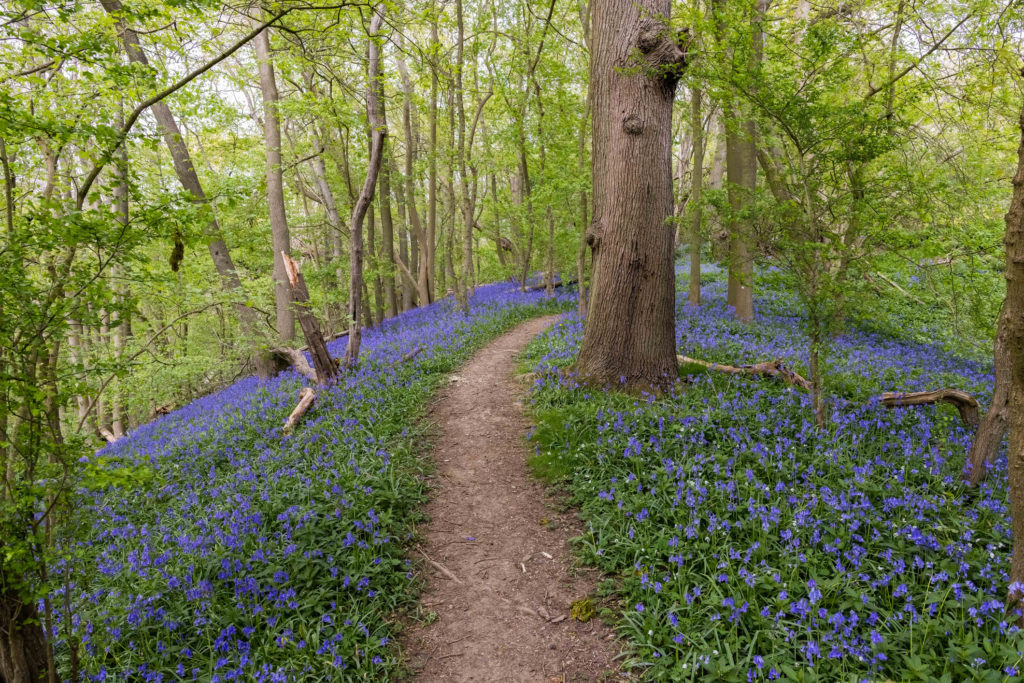
Final Thoughts…
The bluebells of Kent are not merely flowers. They are a living poem written by nature, narrating the story of the seasons, celebrating the beauty of existence, and reminding us of our intimate connection with the world. So, next time you’re in Kent in spring, take a moment to wander into the woods, breathe in the perfumed air, and lose yourself in the mesmerising symphony of blue..



